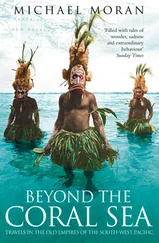On the night of the 5th of September, and the following morning, there was a thick fog; yet we were not more than a hundred toises above the level of the sea. I determined geometrically, at the moment of our departure, the height of the great calcareous mountain which rises at 800 toises distance to the south of San Fernando, and forms a perpendicular cliff on the north side. It is only 215 toises higher than the great square; but naked masses of rock, which here exhibit themselves in the midst of a thick vegetation, give it a very majestic aspect.
The road from San Fernando to Cumana passes amidst small plantations, through an open and humid valley. We forded a number of rivulets. In the shade the thermometer did not rise above 30 degrees: but we were exposed to the direct rays of the sun, because the bamboos, which skirted the road, afforded but small shelter, and we suffered greatly from the heat. We passed through the village of Arenas, inhabited by Indians, of the same race as those at San Fernando. But Arenas is no longer a mission; and the natives, governed by a regular priest,* (* The four villages of Arenas, Macarapana, Mariguitar, and Aricagua, founded by Aragonese Capuchins, are called Doctrinas de Encomienda.) are better clothed, and more civilized. Their church is also distinguished in the country by some rude paintings which adorn its walls. A narrow border encloses figures of armadilloes, caymans, jaguars, and other animals peculiar to the new world.
In this village lives a labourer, Francisco Lozano, who presented a highly curious physiological phenomenon. This man has suckled a child with his own milk. The mother having fallen sick, the father, to quiet the infant, took it into his bed, and pressed it to his bosom. Lozano, then thirty-two years of age, had never before remarked that he had milk: but the irritation of the nipple, sucked by the child, caused the accumulation of that liquid. The milk was thick and very sweet. The father, astonished at the increased size of his breast, suckled his child two or three times a day during five months. He drew on himself the attention of his neighbours, but he never thought, as he probably would have done in Europe, of deriving any advantage from the curiosity he excited. We saw the certificate, which had been drawn up on the spot, to attest this remarkable fact, eye-witnesses of which are still living. They assured us that, during this suckling, the child had no other nourishment than the milk of his father. Lozano, who was not at Arenas during our journey in the missions, came to us at Cumana. He was accompanied by his son, then thirteen or fourteen years of age. M. Bonpland examined with attention the father's breasts, and found them wrinkled like those of a woman who has given suck. He observed that the left breast in particular was much enlarged; which Lozano explained to us from the circumstance, that the two breasts did not furnish milk in the same abundance. Don Vicente Emparan, governor of the province, sent a circumstantial account of this phenomenon to Cadiz.
It is not a very uncommon circumstance, to find, among animals, males whose breasts contain milk; and climate does not appear to exercise any marked influence on the greater or less abundance of this secretion. The ancients cite the milk of the he-goats of Lemnos and Corsica. In our own time, we have seen in Hanover, a he-goat, which for a great number of years was milked every other day, and yielded more milk than a female goat. Among the signs of the alleged weakness of the Americans, travellers have mentioned the milk contained in the breasts of men. It is, however, improbable, that it has ever been observed in a whole tribe, in some part of America unknown to modern travellers; and I can affirm that at present it is not more common in the new continent, than in the old. The labourer of Arenas, whose case has just been mentioned, was not of the copper-coloured race of Chayma Indians, but was a white man, descended from Europeans. Moreover, the anatomists of St. Petersburgh have observed that, among the lower orders of the people in Russia, milk in the breasts of men is much more frequent than among the more southern nations: yet the Russians have never been deemed weak and effeminate. There is among the varieties of the human species a race of men whose breasts at the age of puberty acquire a considerable bulk. Lozano did not belong to that race; and he often repeated to us his conviction, that it was only the irritation of the nipple, in consequence of the suction, which caused the flow of milk.
When we reflect on the whole of the vital phenomena, we find that no one of them is entirely isolated. In every age examples are cited of very young girls and women in extreme old age, who have suckled children. Among men these examples are more rare; and after numerous researches, I have not found above two or three. One is cited by the anatomist of Verona, Alexander Benedictus, who lived about the end of the fifteenth century. He relates the history of an inhabitant of Syria, who, to calm the fretfulness of his child, after the death of the mother, pressed it to his bosom. The milk soon became so abundant, that the father could take on himself the nourishment of his child without assistance. Other examples are related by Santorellus, Faria, and Robert, bishop of Cork. The greater part of these phenomena having been noticed in times very remote, it is not uninteresting to physiology, that we can confirm them in our own days.
On approaching the town of Cumanacoa we found a more level soil, and a valley enlarging itself progressively. This small town is situated in a naked plain, almost circular, and surrounded by lofty mountains. It was founded in 1717 by Domingo Arias, on the return of an expedition to the mouth of the Guarapiche, undertaken with the view of destroying an establishment which some French freebooters had attempted to found. The new town was first called San Baltazar de las Arias; but the Indian name Cumanacoa prevailed; in like manner the name of Santiago de Leon, still to be found in our maps, is forgotten in that of Caracas.
On opening the barometer we were struck at seeing the column of mercury scarcely 7.3 lines shorter than on the coasts. The plain, or rather the table-land, on which the town of Cumanacoa is situated, is not more than 104 toises above the level of the sea, which is three or four times less than is supposed by the inhabitants of Cumana, on account of their exaggerated ideas of the cold of Cumanacoa. But the difference of climate observable between places so near each other is perhaps less owing to comparative height than to local circumstances. Among these causes we may cite the proximity of the forests; the frequency of descending currents, so common in these valleys, closed on every side; the abundance of rain; and those thick fogs which diminish during a great part of the year the direct action of the solar rays. The decrement of the heat being nearly the same within the tropics, and during the summer under the temperate zone, the small difference of level of one hundred toises should produce only a change in the mean temperature of 1 or 1.5 degrees. But we shall soon find that at Cumanacoa the difference rises to more than four degrees. This coolness of the climate is sometimes the more surprising, as very great heat is felt at Carthago (in the province of Popayan); at Tomependa, on the bank of the river Amazon, and in the valleys of Aragua, to the west of Caracas; though the absolute height of these different places is between 200 and 480 toises. In plains as well as on mountains the isothermal lines (lines of similar heat) are not constantly parallel to the equator, or the surface of the globe. It is the grand problem of meteorology to determine the inflections of these lines, and to discover, amid modifications produced by local causes, the constant laws of the distribution of heat.
Читать дальше












